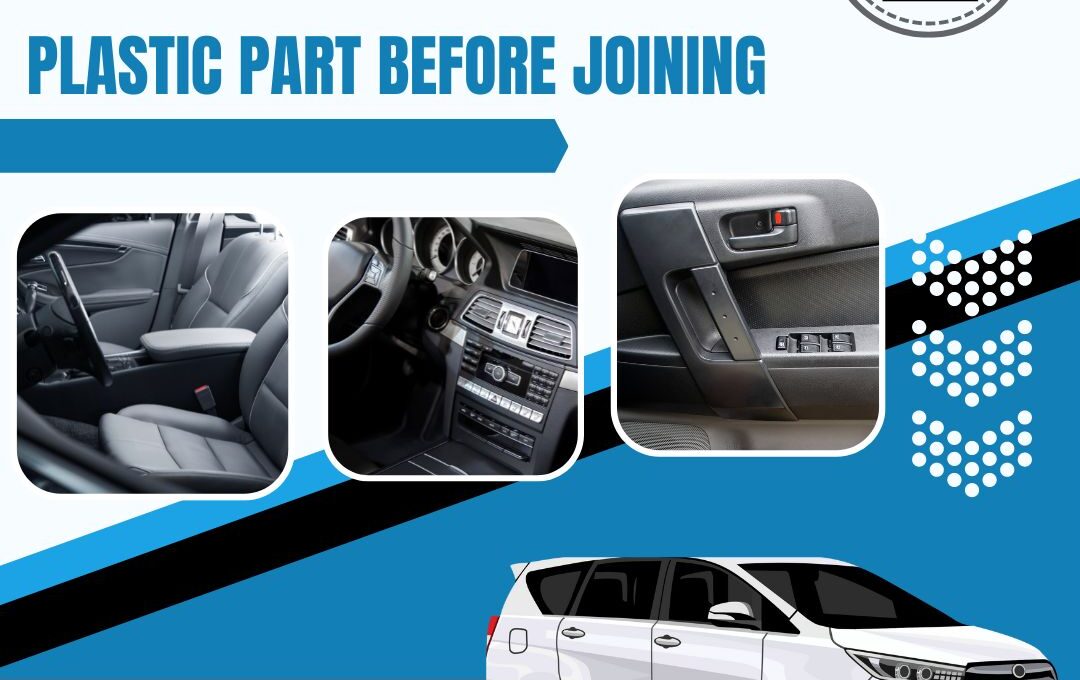Introduction to Plastic Parts Joining
- Importance of Joining Plastic Parts: Plastic parts are in several places at the same time in various industries, from automotive to electronics. However, to create functional products, these parts often need to be joined together. Joining methods play a crucial role in ensuring the integrity and durability of the final product.
- Overview of Different Joining Methods: There are several methods available for joining plastic parts, each with its own set of advantages and limitations. Understanding these methods is essential for manufacturers to make informed decisions.
- Significance of Choosing the Right Method: Selecting the appropriate joining method is crucial for achieving the desired performance, cost-effectiveness, and aesthetics of the assembled product.
Understanding Plastic parts Joints
- Definition of Plastic Joints: A plastic joint is a connection between two or more plastic components that enables them to function as a single unit. These joints can be achieved through mechanical, chemical, or thermal means.

Frequently Asked Questions
-
- What are the Benefits of Joining Plastic Parts?: Joining plastic parts allows for the creation of complex assemblies, reduces material waste, and facilitates recycling.
- How Do You Determine the Best Joining Method for a Specific Application?: The best joining method depends on factors like material compatibility, assembly requirements, and production constraints.
- Can Different Types of Plastics be Joined Together?: Yes, with proper surface preparation and selection of suitable joining methods, different types of plastics can be successfully joined.
- What Safety Precautions Should be Taken During Plastic Joining Processes?: Safety measures such as proper ventilation, personal protective equipment, and adherence to manufacturer guidelines are essential during plastic joining operations.
- How Does Joint Design Affect the Strength of Plastic Assemblies?: The design of the joint influences factors like stress distribution, load-bearing capacity, and resistance to environmental factors, ultimately affecting the strength and durability of the assembly.Exploring Vimalssonic: A Leader in Plastic Joining Solutions
- Introduction to Vimalssonic: Vimalssonic is a renowned manufacturer, supplier, and exporter of machines and equipment for plastic joining applications.
- Overview of Products and Services: Vimalssonic offers a wide range of machines for various plastic joining methods, along with comprehensive services such as feasibility studies, concept machine design, installation, training, and ongoing support.
- Case Studies and Testimonials: Case studies showcasing successful applications of Vimalssonic’s solutions in industries like automotive, white goods manufacturing, toys, PCB and plastic electronics, and metal-plastic assemblies.
- Customer Satisfaction: Testimonials from satisfied customers highlighting the reliability, performance, and support provided by Vimalssonic.
Applications of Plastic Joining in Various Industries
- Automotive Sector: Plastic joining plays a crucial role in vehicle assembly, contributing to weight reduction, improved fuel efficiency, and enhanced safety.
- White Goods Manufacturing: Joining methods like adhesive bonding and snap-fit assembly are commonly used in the production of appliances such as refrigerators, washing machines, and air conditioners.
- Toy Industry: Plastic joining techniques enable the assembly of intricate toy designs, ensuring safety and durability for children’s products.
- PCB and Plastic Electronics: Plastic joining is essential for assembling electronic components onto printed circuit boards, providing structural support and electrical connectivity.
- Metal and Plastic Assemblies: Joining metal and plastic components together allows for the creation of hybrid assemblies with unique properties and functionalities.
Ready to optimize your plastic joining processes with expert guidance from Vimalssonic?
Contact our team today to discuss your specific requirements, from selecting the best joining method to customizing automation solutions for your production needs.

